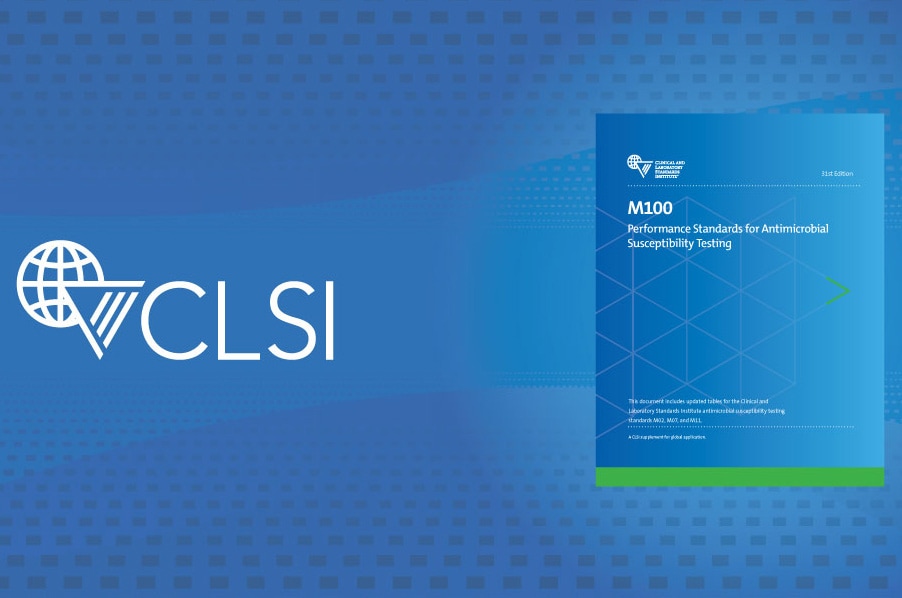The Clinical & Laboratory Standards Institute announces Clinical Breakpoints for Azithromycin for Shigella
Antimicrobial-Resistant Shigella
Shigellosis is a nationally notifiable disease caused by Shigella bacteria. There are an estimated 450,000 cases of shigellosis in the United States each year. Some common symptoms of shigellosis are diarrhea (that is sometimes bloody), fever, stomach pain, and feeling the need to pass stool (poop) even when the bowels are empty. Most people recover from shigellosis without treatment. But some people need antibiotics to treat or prevent severe illness and to shorten the duration of symptoms.
Some types of Shigella are resistant to antimicrobials. Antimicrobial resistance happens when germs like bacteria and fungi develop the ability to defeat the drugs designed to kill them. That means the germs are not killed and continue to grow. An antimicrobial-resistant Shigella infection may not be cured with an antibiotic. When compared with an antimicrobial-susceptible (curable by antibiotic) Shigella infection, resistant infections may be harder to treat. They may also last longer, which increases the chance the bacteria might spread to others. An estimated 77,000 antibiotic-resistant Shigella [PDf – 2 pages] infections occur in the United States each year.
On March 23, 2021, the Clinical & Laboratory Standards Institute (CLSI) published the M100: Performance Standards for Antimicrobial Susceptibility Testing. The updated publication includes newly established clinical breakpoints for azithromycin for Shigella resulting from years of research and surveillance by the laboratory scientists and epidemiologists who work on CDC’s National Antimicrobial Resistance Monitoring System (NARMS) and collaborators at the University of Virginia and the California Department of Public Health.
A Gap in Antimicrobial Treatment Decision-making

Estimates from NARMS surveillance data indicate that the percentage of Shigella isolates resistant to azithromycin increased from 4% in 2013 to 35% in 2018. As resistance is becoming more common in Shigella, clinicians need antimicrobial susceptibility testing (AST) to make appropriate treatment decisions. AST is a laboratory procedure that determines whether bacteria are resistant or susceptible to an antibiotic depending on the concentration (amount) of the antibiotic needed to stop the bacteria from growing. The bacteria are considered resistant if they continue to grow at concentrations of an antibiotic higher than the breakpoint (the established antibiotic concentrations used to classify bacteria as resistant or susceptible). Until now, clinicians and diagnostic labs did not have breakpoints to test whether Shigella was susceptible to azithromycin, a first-choice antibiotic treatment. This left a gap in information needed to guide treatment decisions.
Progress Through Collaboration
For several years, CDC scientists have been working with state public health, clinical laboratory, and academic collaborators to provide data needed to establish azithromycin breakpoints for Shigella. In 2018, CDC provided funding to researchers at the University of Virginia and to the California Department of Health to examine the relationship between azithromycin susceptibility test results and severity of illness and clinical outcomes among patients with Shigella infections. The University of Virginia collaborated with the International Centre for Diarrheal Disease Research in Bangladesh to study the concentration of azithromycin needed to stop the bacteria from growing. They found that the strains of Shigella that required higher concentrations were associated with longer courses of illness.

Establishing Breakpoints
In August 2020, representatives from CDC NARMS, the California Department of Public Health, and the University of Virginia met with the Clinical & Laboratory Standards Institute (CLSI) to discuss the findings from their research and present recommendations for azithromycin susceptibility breakpoints for Shigella infection to CLSI’s Breakpoint Working Group. CLSI is one of three international organizations that establish breakpoints.
Making Strides in Patient Care
The following month, the CLSI Subcommittee on Antimicrobial Susceptibility Testing voted to approve these recommendations. The new breakpoints were published in CLSI’s M100 for 2021. Now armed with the tools to determine whether a Shigella infection will respond to azithromycin, clinicians can get patients on the right treatment sooner, improving their care and outcomes.